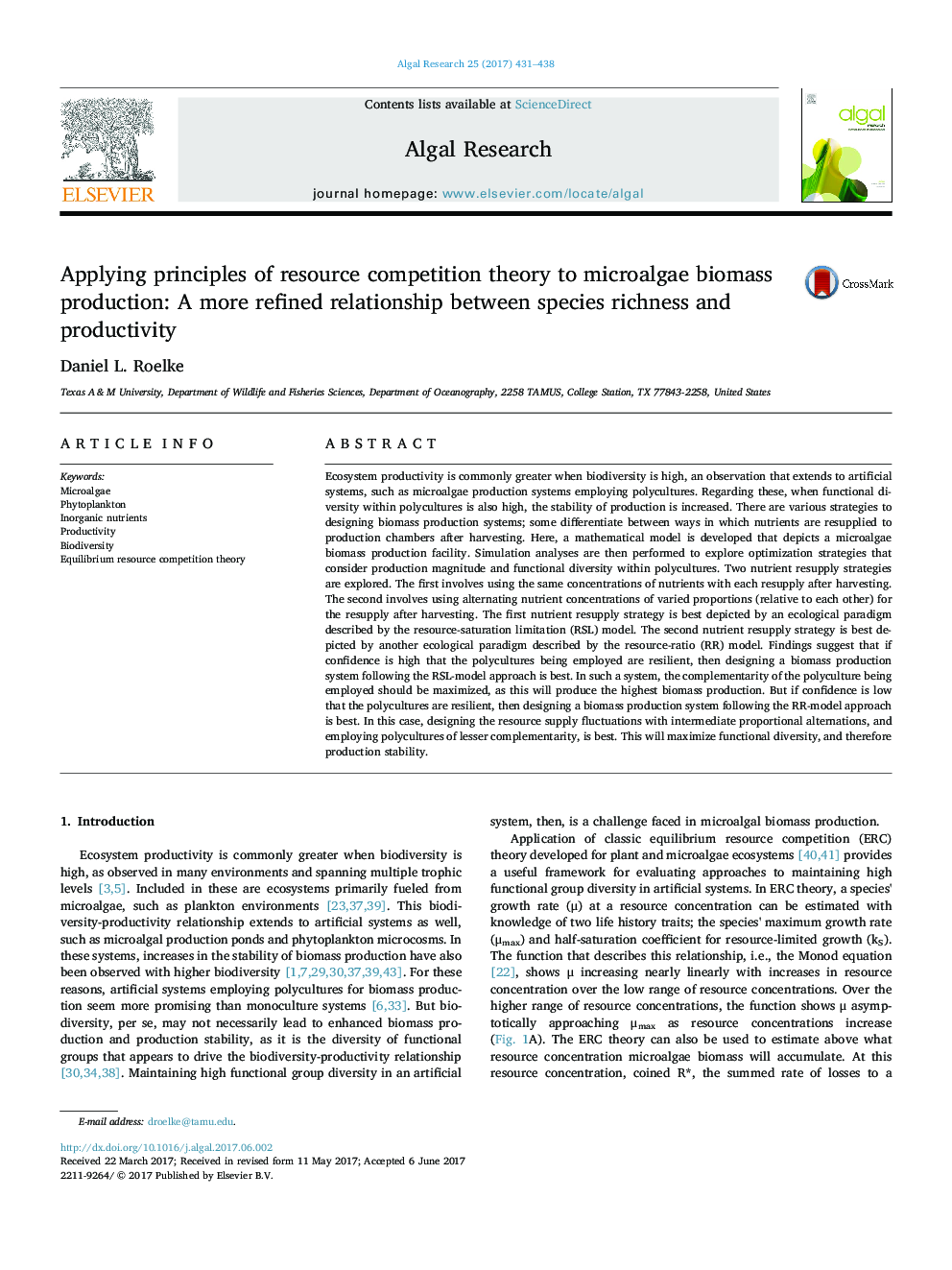| کد مقاله | کد نشریه | سال انتشار | مقاله انگلیسی | نسخه تمام متن |
|---|---|---|---|---|
| 5478406 | 1521808 | 2017 | 8 صفحه PDF | دانلود رایگان |
عنوان انگلیسی مقاله ISI
Applying principles of resource competition theory to microalgae biomass production: A more refined relationship between species richness and productivity
ترجمه فارسی عنوان
اعمال اصول تئوری رقابت منبع به تولید زیست توده میکروالگها: یک رابطه بیشتر تصفیه شده بین غنای گونه ای و بهره وری
دانلود مقاله + سفارش ترجمه
دانلود مقاله ISI انگلیسی
رایگان برای ایرانیان
کلمات کلیدی
موضوعات مرتبط
مهندسی و علوم پایه
مهندسی انرژی
انرژی های تجدید پذیر، توسعه پایدار و محیط زیست
چکیده انگلیسی
Ecosystem productivity is commonly greater when biodiversity is high, an observation that extends to artificial systems, such as microalgae production systems employing polycultures. Regarding these, when functional diversity within polycultures is also high, the stability of production is increased. There are various strategies to designing biomass production systems; some differentiate between ways in which nutrients are resupplied to production chambers after harvesting. Here, a mathematical model is developed that depicts a microalgae biomass production facility. Simulation analyses are then performed to explore optimization strategies that consider production magnitude and functional diversity within polycultures. Two nutrient resupply strategies are explored. The first involves using the same concentrations of nutrients with each resupply after harvesting. The second involves using alternating nutrient concentrations of varied proportions (relative to each other) for the resupply after harvesting. The first nutrient resupply strategy is best depicted by an ecological paradigm described by the resource-saturation limitation (RSL) model. The second nutrient resupply strategy is best depicted by another ecological paradigm described by the resource-ratio (RR) model. Findings suggest that if confidence is high that the polycultures being employed are resilient, then designing a biomass production system following the RSL-model approach is best. In such a system, the complementarity of the polyculture being employed should be maximized, as this will produce the highest biomass production. But if confidence is low that the polycultures are resilient, then designing a biomass production system following the RR-model approach is best. In this case, designing the resource supply fluctuations with intermediate proportional alternations, and employing polycultures of lesser complementarity, is best. This will maximize functional diversity, and therefore production stability.
ناشر
Database: Elsevier - ScienceDirect (ساینس دایرکت)
Journal: Algal Research - Volume 25, July 2017, Pages 431-438
Journal: Algal Research - Volume 25, July 2017, Pages 431-438
نویسندگان
Daniel L. Roelke,
